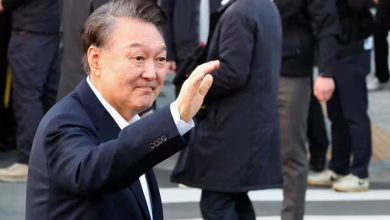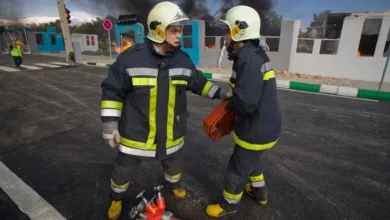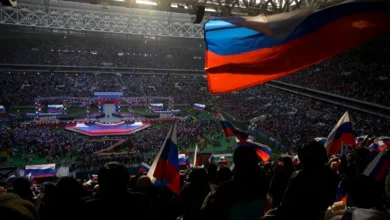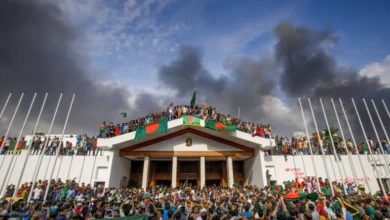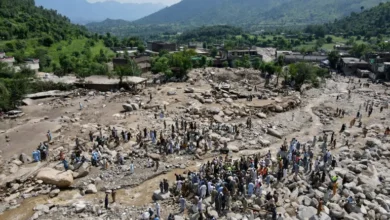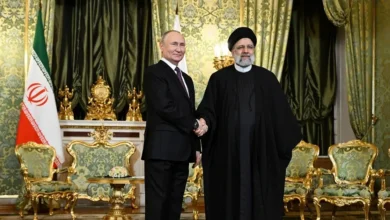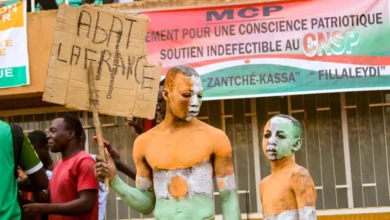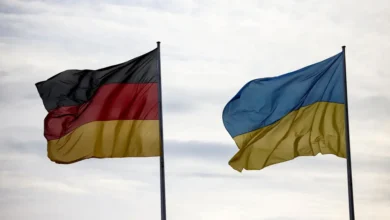‘The atmosphere was electric’ – the fall and rise of Morocco’s cinemas
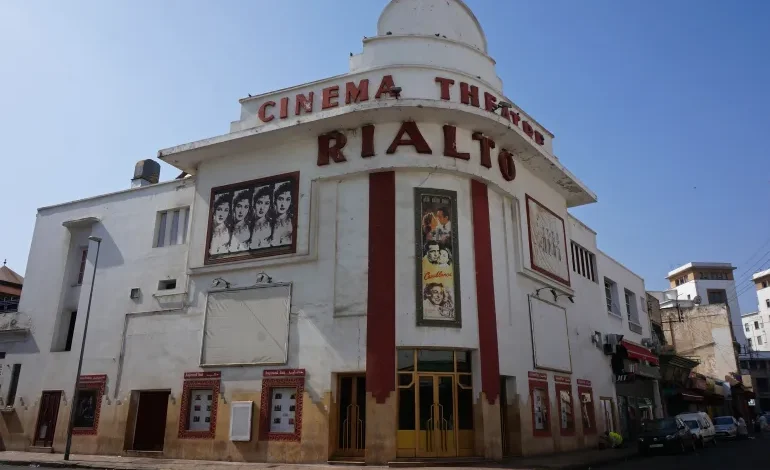
“You used to be able to smoke inside,” Omar Edressi recalls about Cinema Rif, the 86-year-old movie theatre that still stands on Tangier’s Grand Socco. “The first thing that welcomed you when you entered the building was a thick cloud of vapour.”
Tickets to the cinema were a lot cheaper in the 1970s when Edressi, a local cinema lover, would visit – it cost just one dirham ($0.10) for entrance, a sandwich and a soda. Today, a ticket will set you back by roughly 50 dirham ($5) and a soda about 15 ($1.50).
“Of course, back then we had to set up our own chairs and the place was pretty shabby, but we would still spend whole afternoons as happy as could be,” he laughs.
An art-deco building, Cinema Rif stands out from a crowd of whitewashed restaurants and shuttered buildings on Grand Socco, a quaint, palm-ringed square marking the entrance of the city’s ancient medina.
Emblazoned with bold red paint and colourful film posters, the establishment was recently restored; plush red chairs and a glaring white screen can now be found inside the glittering theatre.
A ‘safe space’ to escape conservative society – for a moment
The period Edressi describes is often seen as the heyday of Moroccan cinema; by the 1980s, some 240 movie theatres across the country were regularly packed with film lovers. More than 42 million cinema tickets were purchased each year – a considerable amount considering that the population of Morocco was about 19.5 million in 1980. More tickets still were sold on the black market.
Journalist and social activist Ahmed Boughaba remembers living in Rabat during this time. In order to buy tickets for his favourite movie theatre, Cinema Renaissance, he would have to arrive an hour early and queue.
“If you were late, you would have to purchase your ticket from the black market,” Boughaba says. “The prices were always inflated and far too expensive.”
These black-market sellers would hoard tickets for popular films to sell them at a premium price. They would set up shop in shady street corners and hidden alleyways in order to avoid watchful cinema staff and authorities.
Local Tangier gallery owner, Najoua Elhitmi, remembers similar levels of popularity at Tangier’s cinemas. During the 1980s, Elhitmi recalls that movie houses were a prime meeting point for teenagers and young adults.
“You could avoid prying eyes in the darkness, so it was a good place for first dates – and first kisses…” Elhitmi trails off, laughing. “It sounds trivial, but in many ways it was a safe escape from the more conservative aspects of Moroccan society.”
Lamia Bengelloun, programmer and community manager at Cine-Theatre Lutetia in Casablanca, which first opened in 1953, tells a similarly heartwarming story. “We recently had a premiere of Asmaa El Moudir’s film, The Mother of All Lies,” Bengelloun says. “Asmaa visited the cinema to attend the screening and she told the audience that her parents’ first date was in the Lutetia.”
Boughaba recalls travelling from Rabat to Casablanca to attend the premieres of new films.
“It would take about an hour and a half to drive there, but the atmosphere was electric,” Boughaba tells me. “That is the best thing about visiting the cinema. You can feel the energy and emotion of those around you as you watch the film – it is a shared experience.”
One of the establishments that regularly held premieres during this period was Cine-Theatre Lutetia that, along with the older art-deco Cinema Rialto – which opened in 1929 and still operates today – were also among the most popular spots in the city.
“My father and aunts tell me stories of how people used to get dressed up just to come and watch a film,” Bengelloun says, her eyes lighting up. “A trip to the cinema was an occasion that people looked forward to.”
Fall and decline: Satellite TV, pirate DVDs and streaming services
Towards the end of the 1980s and into the 1990s, Morocco’s cinemas started to close down. In Tangier, iconic establishments such as Cinema Roxy, Cinema Paris and Cinema Mauritania were all shut during this period. Cinema Liberte in Casablanca was another casualty.
By the time of the Arab Spring in 2011, Morocco’s movie theatres were very much out of fashion. This could partly be attributed to the growing availability of other forms of media, including DVDs, satellite TV and, eventually, the launch of online streaming services.
“Society started to move a lot faster. People wanted an easy fix to watch movies – not necessarily an afternoon out,” Bengelloun says. “Local favourites, like Casablanca’s Cinema Liberté, closed down as a result.”
